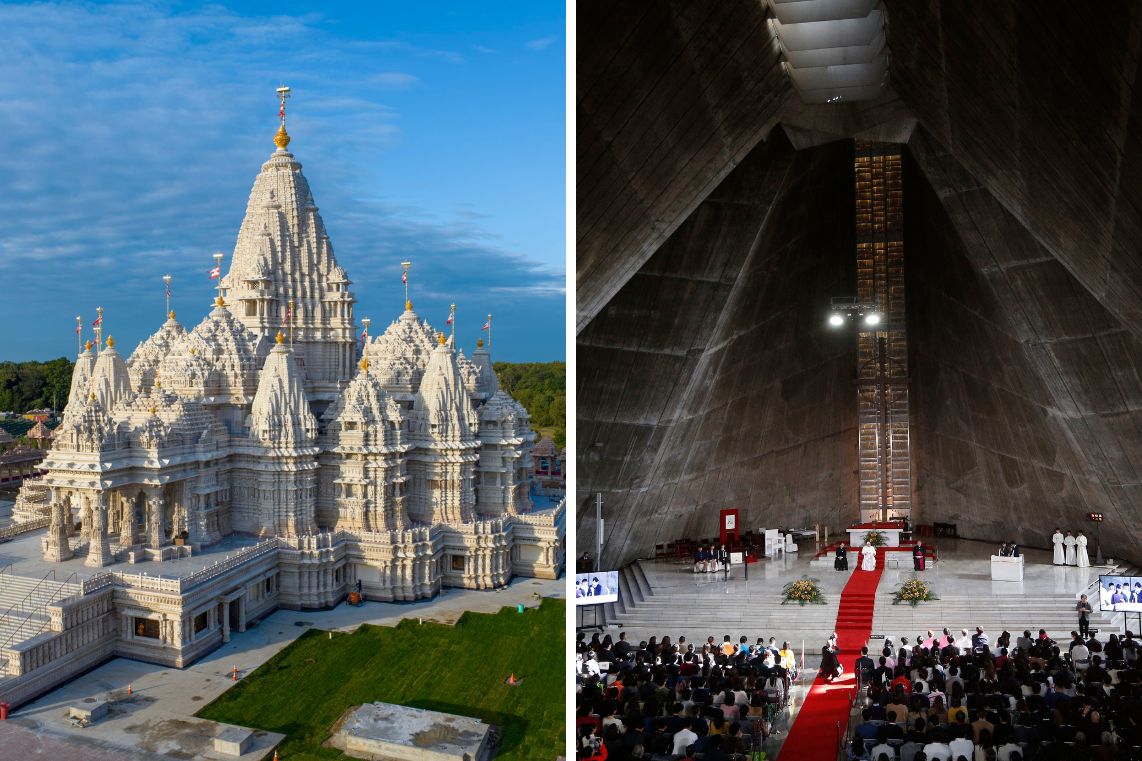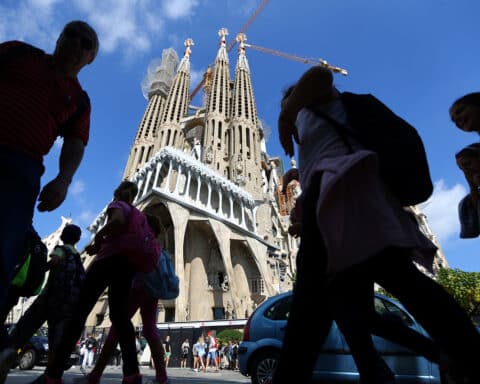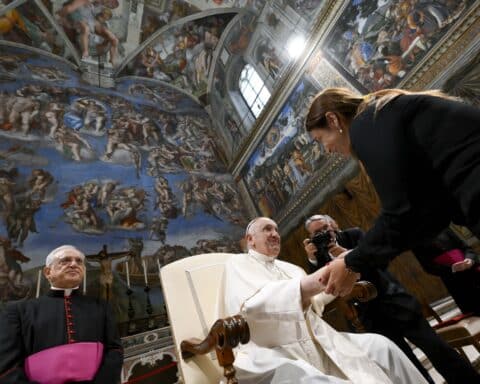“Beauty will save the world,” Dostoyevsky famously wrote in his novel, “The Idiot.”
Certainly beauty is a subjective thing, and one can reasonably find it in the most highly decorated space as in the simplistic bareness, when it is true.
And in the places meant for religious worship, beauty must always be true, if it will serve.
While in college, one of my sons dated a lovely girl who had moved from an ersatz atheism into Christian Orthodoxy. The Orthodox attraction was partly connected to her Eastern European ancestry but also due to the lessons and invitations to contemplation found within the abundant beauty of Orthodox worship. While the suburban parish she frequently visited was very small and rather humble, the iconostasis, the chanting, the high prayers and full engagement of senses and physicality that she experienced there became an irresistible foretaste of heaven that drew her toward belief. Her eventual chrismation was a joyous day.
Having attended a few liturgies with her, my son invited her to Mass at the 1960s-era parish he’d attended all his life. The building is very large, very square and rather bare, with earth-toned painted windows and an abundance, some might say overabundance, of pale yellow brick and dark brown wood. Looking around before Mass began, the girl leaned over and asked, with genuine sincerity, “What was this building before it was a church? Was it a warehouse?”
My son sighed. It wasn’t the first time he’d been asked the question. “No. It was designed this way.”
Despite her normally excellent manners, the girl couldn’t stop her incredulous gasp. “For GOD?”
The recent opening of Akshardham Mahamandir
That memory floated up as I read about the recent opening of Akshardham Mahamandir in Robbinsville, New Jersey. Believed to be the largest Hindu temple in the Western Hemisphere, the building — which cost an estimated $96 million and took 15 years to build — is a breathtaking bit of religious architecture featuring soaring spires, 10,000 statues and intricately carved columns.
Beyond reading that George Harrison, in a letter to his mother, wrote that his conversion to Hinduism “only strengthened” his devotion to the Sacred Heart, I know nothing of the Hindu faith and have never been remotely curious to study it. Yet the very first photograph I encountered of Akshardham Mahamandir had me planning a visit. The airy lightness of so large a structure, the highly decorative, peculiarly warm whiteness of the interior instantly beckoned me toward wonder, and wonder — no matter its source — is always a happy beckoning to cast one’s thoughts to God, the Creator and All-Good.
“That’s a reminder that architecture can give inviting witness to faith,” a smart friend of mine remarked.
Two temples
Indeed. Contrast the new temple with St. Mary’s Catholic Cathedral in Tokyo, which my friend aptly referred to as a “temple of doom.” The church’s exterior comes at one like a steel razor, while the stark interior features shadows and extreme utilitarianism. Perhaps the architect intended to create a quiet space of anticipation — a fervent hope for the light? — but the concrete walls, and the absence of saintly depictions of our spiritual ancestors, communicates solitary confinement rather than communion. And the two unadorned beams blaring out from above the crucifix suggest cold, unblinking and merciless eyes within a pyramid. The overall sense of expectation I take from it is of chilling dystopian oppression and the imminent arrival of Darth Vader. One half expects gruel to be flung from a sliding door at any moment, before darkness once more descends.
Perhaps others can find invitation, inspiration, consolation and instruction from the “temple of doom,” but I am repelled. I want only escape from that environment, and so (again, for me) this example of sacred architecture registers as an epic fail. In general, Japanese artwork has always intrigued me, and yet here I am, closing those images as I schedule a visit to northern New Jersey.
Did I just write those words?
St. Mary’s Cathedral will remain a longshot on my itinerary, while a temple wholly outside my faith looks too gorgeously interesting to go unexplored. Who wins the “lead with beauty” effort today, then?
The Robbinsville temple opens up with serious questions being asked about the treatment of the laborers responsible for its construction, and that’s a grave enough issue to give pause — to make us wonder how many of our stunning basilicas and shrines and “civic wonders” have arisen on the backs of workers who were endangered, undercompensated or even compelled into work they did not wish to do. Let us hope the ongoing investigation into the question yields credible answers and justice for the ill-treated. That the debasement and exploitation of workers must never happen should go without saying, particularly in works that are meant to succor the spirit and invite it toward our encounters of God.





